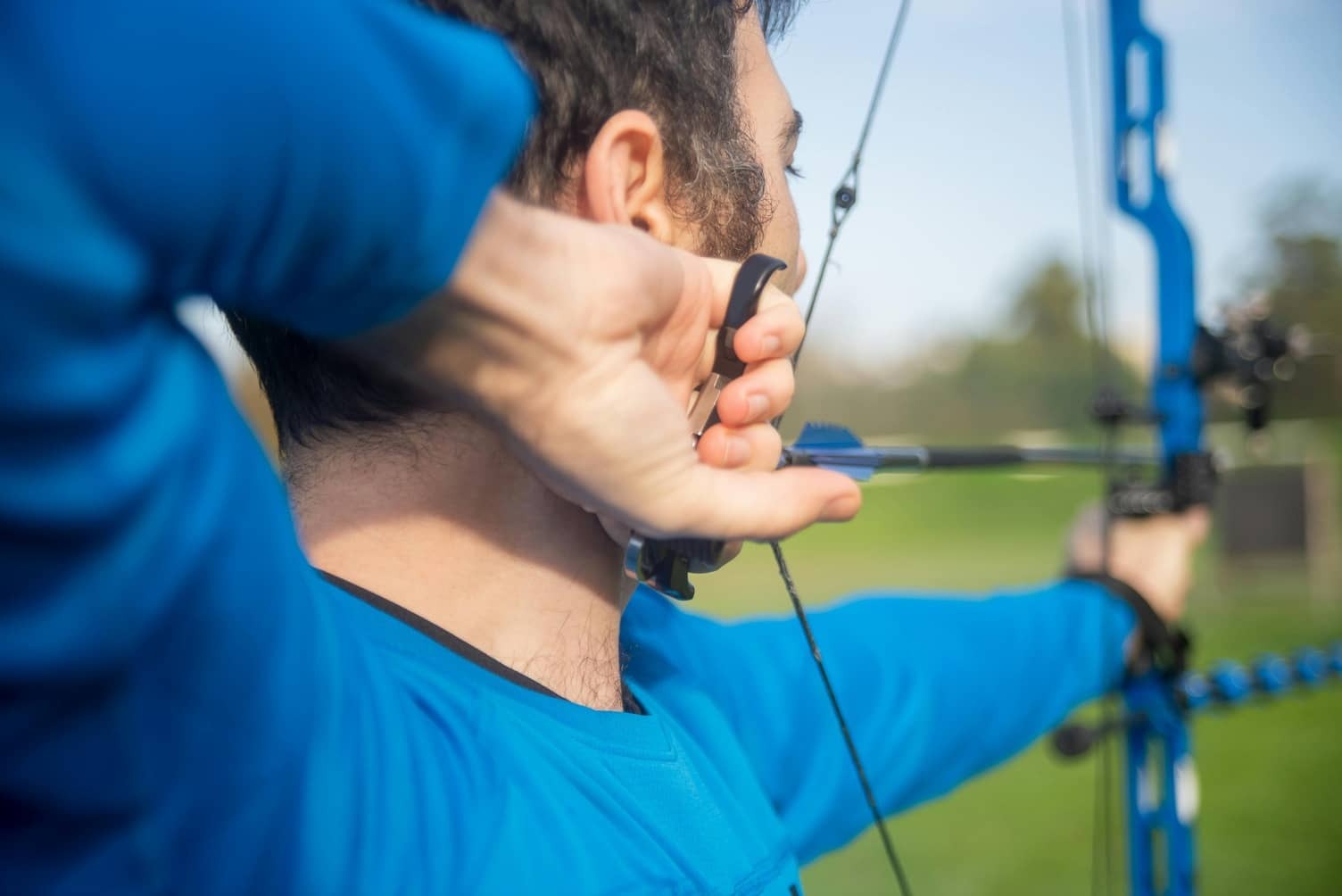How to Hunt in the Wind | Shooting Tips
Posted by Brad Patsy on Jan 14th 2025
Shooting in the wind is difficult. The slightest variances in both the wind and your performance can impact the flight of your arrow, so there isn’t an exact science to it. Wind velocity and direction change by the second, so you’ll need to reevaluate your approach with every shot.
Even the best archers have to rely on instinct in windy conditions. Developing that sixth sense takes a lot of practice, so the most important tip is to take advantage of those windy days when you can. Once you’re confident in the backyard, you can start exploring how to hunt in the wind accurately and ethically. Here are some tips to get you started.
1. Assess the Wind’s Velocity and Direction

In order to plan your shot, you’ll need to determine the wind’s speed and direction. You don’t necessarily need to know the exact numbers, but working with concrete figures will help you make informed choices in the future, especially if you keep track of your different approaches in various conditions. That said, some archers prefer to rely on “feel,” rather than concrete figures.
Using an anemometer (wind gauge) or even a smartphone app is the easiest way to know what type of gusts you’re dealing with before you start figuring out how to hunt in the wind. If that’s not your style, you could attach a small piece of string to your stabilizer as a visual aid. Another option is to toss a few blades of grass into the air to get a feel for the wind’s movement.
2. Adjust Your Aim to Compensate

Shooting in the wind is a basic concept on paper, but very tricky in practice. If the wind is blowing east, adjust your aim to the west. Of course, that’s a very simplified version of what you’re doing.
Besides wind velocity and direction, there’s another variable to consider when learning how to hunt in the wind: the amount of time your arrow is traveling from bow to target. Shooting at 60 yards is going to give your arrow a lot more time to drift compared to 10 yards.
And, an arrow shot from a high-performance compound bow is going to have less hang time than an arrow shot with a traditional recurve bow string. Going even further, a new, top-of-the-line compound bow string is going to launch that arrow faster than an old, worn compound bow string.
As a general rule for windy conditions, the faster the bow, the better. Less time in the air means less opportunity to veer off course.
3. Calculate the Expected Arrow Trajectory

If you’re just interested in learning how to hunt in the wind using instinct alone, this tip may not be for you. However, even in that case, you’re still making calculations. You’re just not using solid figures. Even if you’re not math-minded, a little arithmetic can shed light on how you can expect your arrow to travel.
Say you’re shooting in the wind at 40 yards with a 20-mph crosswind. You miss your target by 8 inches. Divide all factors in half—20 yards, 10-mph crosswind, and 4-inch drift. With this data, we can assume that a 20-yard distance affects the shot by 2 inches and the 10-mph wind also affects the shot by 2 inches, give or take.
Now, you can adjust your shot accordingly when learning how to hunt in the wind. If you move back to 60 yards, that’s an extra 20 yards, so you can expect an extra 2 inches of drift.
Similarly, if the wind picks up to 30 miles mph, that’s an extra 10 mph, so you can expect an extra 2-inch drift. If the wind then slows down to 25 mph, you can expect an extra 1-inch drift.
In practice, these variables can change rapidly, so this method isn’t guaranteed to be accurate. It’s more of a thought exercise to help you make informed estimations. Even if that 2-inch figure is slightly off, you still have a rough idea of the arrow’s trajectory, rather than just taking aim and hoping for the best.
4. Mask Your Scent

Once you’re confident that you know how to hunt in the wind, you’re going to need to also consider how the wind affects your prey, and in turn, your hunting strategies. For example, deer will have an advantage due to their incredibly keen sense of smell. Deer can detect a human’s scent up to half a mile away, and the wind can alert them to your presence.
If your prey can detect you from afar, you won’t need to worry about shooting in the wind because they’ll be long gone. Before heading out, wash your clothes with a non-scented detergent. You may also want to use a field spray on yourself and your equipment.
As far as how to hunt in the wind goes, be extra stealthy, try to spot your target from afar before closing in, and take shots as close as possible. When in doubt, make the ethical choice and skip the shot.
5. Upgrade Your Bow String
Using top-quality equipment is especially crucial when it’s windy. Bow strings directly affect the performance of your bow and the velocity and accuracy of your arrows. Using the right bow string makes a major difference in less-than-ideal weather, such as shooting in the rain or wind.
We proudly offer pre-stretched bow strings that are individually built by multi-world and national archery champion, Brad Patsy. He’ll make it to your exact specs, including the bow string material and custom bow string colors. Order now so you can learn how to hunt in the wind with gear that’s up to the task.








